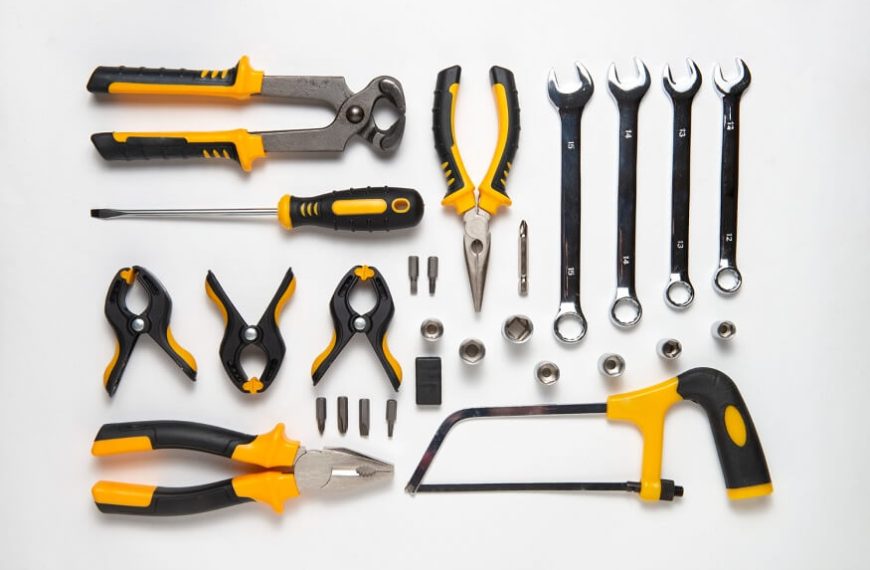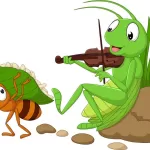The early years of a child’s life are crucial for their cognitive development, and one effective way to enhance their learning experience is through hands-on activities. Introducing tools to preschoolers and kids not only fosters creativity but also helps in developing essential motor skills. In this article, we will delve into the exciting world of tool names in English, exploring a variety of tools that can captivate the curiosity of young minds and encourage their exploration and understanding of the world around them.
The Foundation of Learning: Why Tools Matter for Preschoolers
Children are naturally curious beings, eager to explore and understand the objects and concepts that surround them. Introducing tools at an early age provides them with a tangible way to interact with their environment. The use of tools in play allows children to develop fine motor skills, hand-eye coordination, and problem-solving abilities.
Moreover, exposure to tools fosters a sense of independence and self-confidence in young children. As they manipulate tools to build, create, or fix, they gain a deeper understanding of cause and effect, learn to follow instructions and develop a foundation for more complex cognitive processes.
Essential Tool Names for Preschoolers
Let’s take a closer look at some essential tool names in English that are suitable for preschoolers and kids. These tools are not only safe for young hands but also provide a wide range of learning opportunities.
- Hammer
- Screwdriver
- Pliers
- Tape Measure
- Paintbrush
- Scissors
- Glue Stick
- Wrench
The hammer is a classic tool that introduces children to the concept of pounding and tapping. It helps develop hand strength and coordination as they learn to control the force applied. Activities such as hammering pegs into a wooden board or using a toy hammer with soft materials can be engaging and educational.
Introducing a screwdriver allows children to explore the concept of turning and twisting. Toy screwdrivers with large, easy-to-grip handles can be used with screws and bolts of appropriate sizes. This activity not only enhances fine motor skills but also introduces the concept of fastening and unfastening objects.
Pliers are excellent tools for developing hand strength and precision. Child-friendly pliers with rounded edges can be used for activities like picking up small objects, twisting pipe cleaners, or even pretend to play as they imitate the actions of adults.
While a tape measure might seem like a tool for adults, child-friendly versions with large, easy-to-read numbers can be a fun way to introduce measurement concepts. Children can explore the concept of length by measuring objects around them, fostering early math skills.
Though not a traditional tool, a paintbrush is a valuable instrument for creative expression. Painting allows children to experiment with colours, shapes, and textures while refining their fine motor skills. It’s a tool that bridges the gap between the practical and the artistic, offering a versatile learning experience.
Scissors are fundamental tools for developing cutting skills. Child-safe scissors with rounded tips and easy-to-grip handles enable children to practice cutting paper, enhancing hand-eye coordination and strengthening hand muscles.
Introducing a glue stick provides children with an opportunity to explore the concept of adhesion. Whether they are creating collages or sticking together paper shapes, using a glue stick promotes creativity and helps refine fine motor skills.
A child-friendly wrench with adjustable features can be a great introduction to the concept of turning and tightening. This tool is particularly engaging when used in conjunction with nuts and bolts, allowing children to explore the mechanics of fastening and unfastening.
Learning Through Play: Activities with Tool Names
Now that we’ve explored various tool names suitable for preschoolers and kids, let’s delve into some engaging activities that make learning about tools a fun and interactive experience.
- Toolbox Sorting:
- Construction Site Pretend Play:
- Measurement Scavenger Hunt:
- Collage Creation with Glue Sticks:
- Pipe Cleaner Sculptures with Pliers:
- Nut and Bolt Matching:
Create a toolbox sorting activity using a variety of toy tools. Children can categorize the tools based on their shapes, sizes, or functions. This activity enhances observational skills and encourages critical thinking as children decide where each tool belongs.
Set up a small construction site with toy hammers, screwdrivers, and other tools. Children can take on the role of builders, constructing imaginary structures and using their tools to create a mini construction zone. This pretend play activity fosters creativity, social skills, and an understanding of basic construction concepts.
Hide various objects around the play area and provide children with a child-friendly tape measure. Encourage them to go on a measurement scavenger hunt, measuring the length of different items they find. This activity not only introduces measurement concepts but also promotes physical activity and exploration.
Give children a variety of materials, such as coloured paper, fabric scraps, and buttons, along with glue sticks. Allow them to create collages by sticking these materials onto a larger sheet of paper. This activity not only enhances fine motor skills but also encourages creativity and self-expression.
Provide children with pipe cleaners and child-friendly pliers. Encourage them to twist and bend the pipe cleaners to create unique sculptures. This activity not only develops fine motor skills but also introduces the concept of manipulating materials to form different shapes.
Pair child-friendly nuts and bolts of various sizes. Challenge children to match the corresponding nuts and bolts, enhancing their problem-solving skills and hand-eye coordination. This activity can be made more engaging by using different colors or shapes for matching.
Safety First: Guidelines for Introducing Tools to Kids
While introducing tools to preschoolers and kids is a valuable learning experience, safety should always be a top priority. Here are some guidelines to ensure a safe and enjoyable exploration of tools:
- Choose Age-Appropriate Tools
- Supervise Play
- Teach Proper Tool Use
- Provide Protective Gear
- Establish a Designated Tool Area
- Encourage Communication
Select tools that are specifically designed for the age group of the children. Look for tools with rounded edges, easy-to-grip handles, and non-toxic materials. Avoid tools with small parts that could pose a choking hazard.
Always supervise children when they are using tools, especially if it involves activities such as cutting or hammering. Providing guidance ensures that they use the tools appropriately and safely.
Take the time to demonstrate the proper use of each tool and explain any potential hazards. Emphasize the importance of using tools for their intended purposes and discourage any unsafe practices.
If the activity involves tools that could potentially cause harm, such as scissors, consider providing child-sized safety goggles or other appropriate protective gear. This instills a sense of responsibility and reinforces the importance of safety.
Create a designated area for tool play, ensuring that it is well-lit and free of potential hazards. This helps children understand that tools are to be used in a specific setting and encourages a structured approach to play.
Teach children to communicate with each other while using tools. Encourage them to ask for help if needed and to share their experiences with their peers. This promotes social interaction and cooperation.
Introducing tool names in English to preschoolers and kids is a powerful way to foster their cognitive and motor skill development. By incorporating engaging activities into their playtime, children can explore the exciting world of tools while building a foundation for future learning. Remember, the key is to make the experience enjoyable, safe, and educational, allowing young minds to flourish as they embark on their journey of discovery through the world of tools.
For more such interesting blogs, Visit EuroKids
















